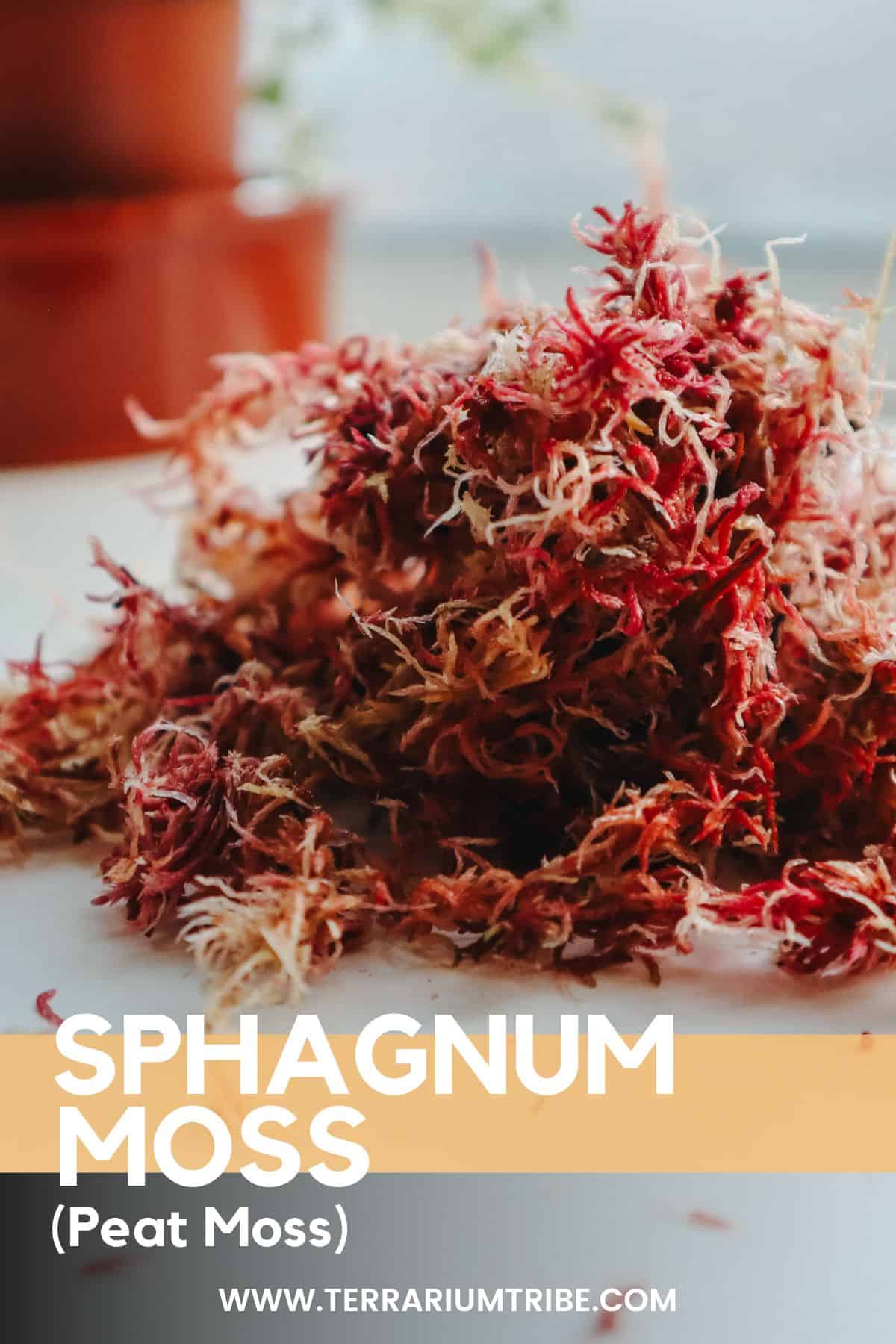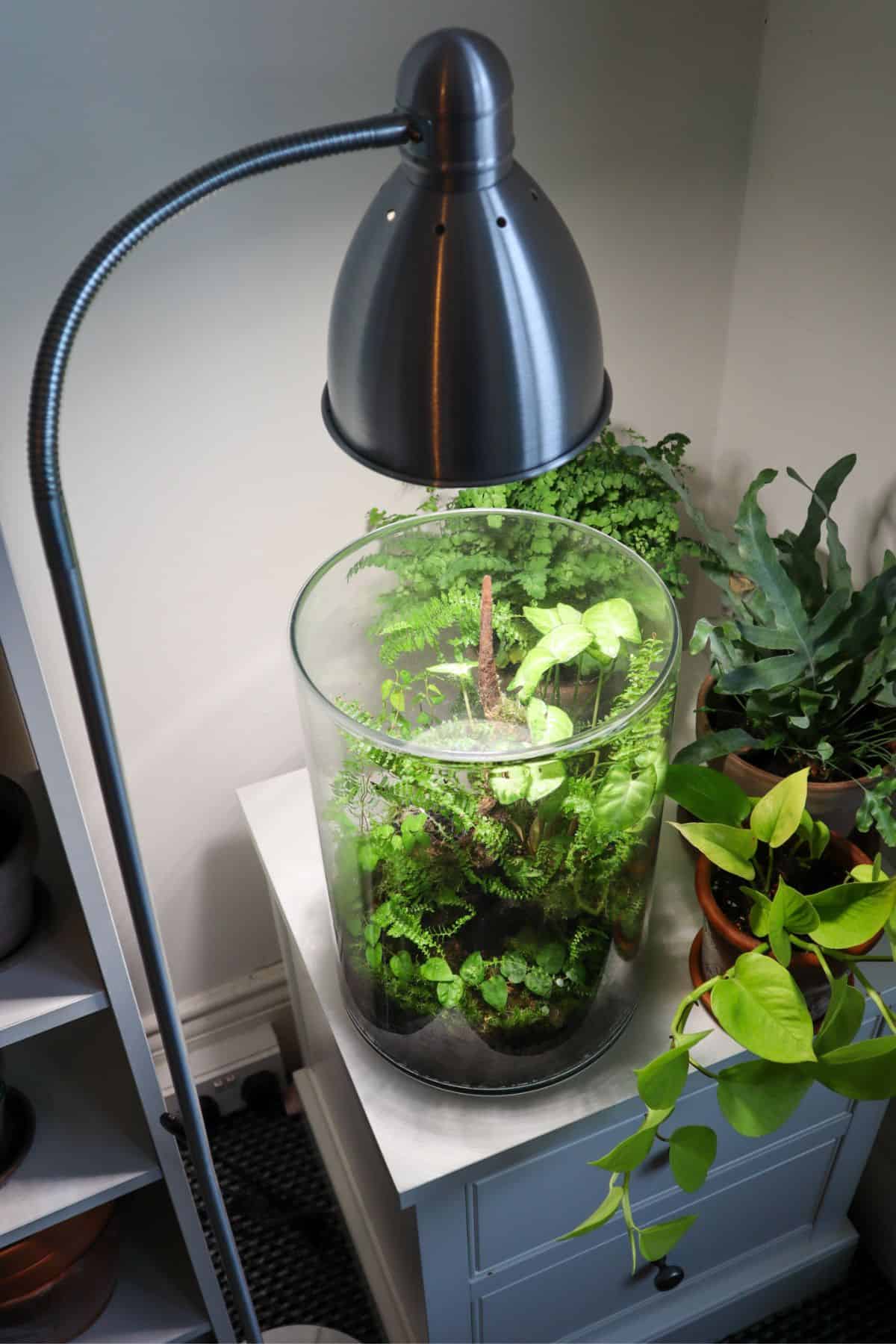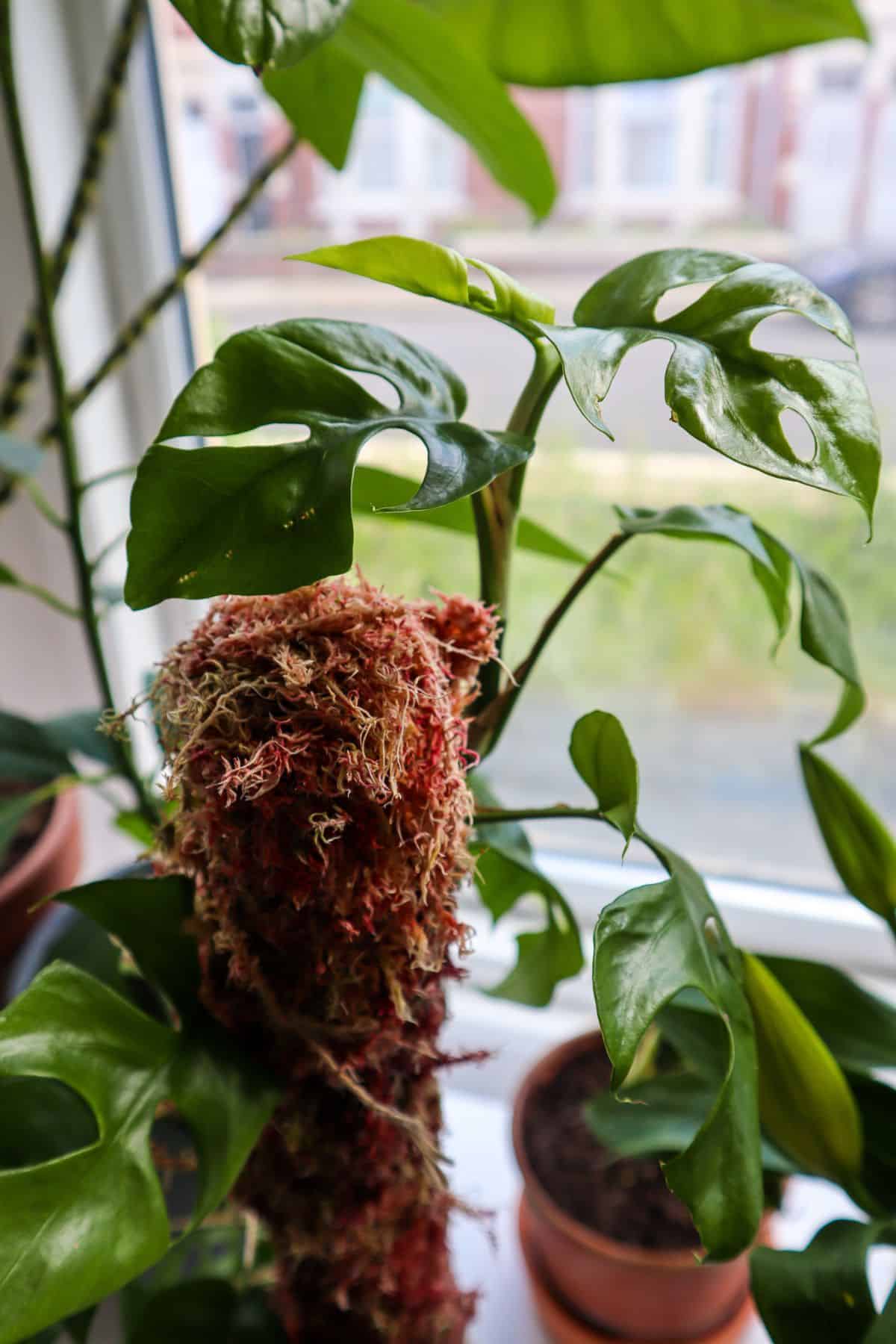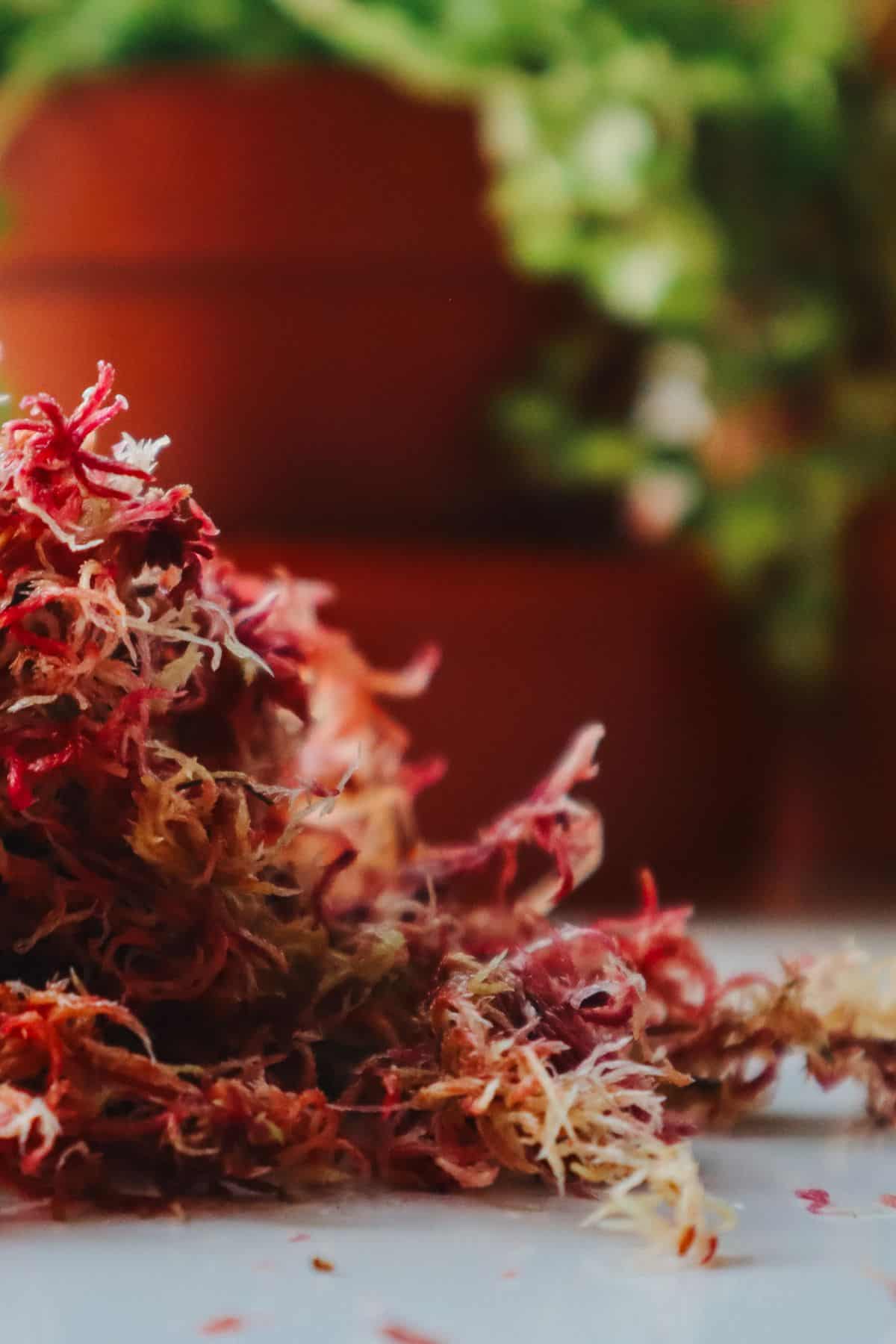Sphagnum moss is a true terrarium staple.
Thanks to some incredible water retention capabilities, it has plenty of utility and potential use cases.
Of course, we see the dried kind used all the time as part of a substrate mix but live sphagnum moss can be a great choice for terrariums too.
It’s often overlooked as a feature plant (despite being a solid carpeting moss), and it’s a great hydration tool for other plants too.
This fascinating moss also has some unique characteristics that allow it to naturally inhibit decomposition and fungal outbreaks. Both of which are extra useful in a terrarium.
Plus, it comes in bright pink… What more could you want?
Find out how to grow sphagnum moss and use it effectively!

Where to Buy Live Sphagnum Moss
See the links below to purchase from reputable terrarium plant shops and marketplaces (may include affiliate links).
Sphagnum Moss Care & Growth
| Plant Type | Moss |
| Lighting | Medium indirect light |
| Temperature | 55-80°F (12-26°C) |
| Watering | Constant, even moisture |
| Humidity | Medium – high humidity (50-80%) |
| Growth | 1-4 inches |
Lighting
As you might expect from a peat bog-dwelling plant, sphagnum moss doesn’t require much light to grow effectively. It can manage just fine in partial shade.
That said, for best results, you’ll want bright indirect light.
With the right conditions (especially with the help of some solid terrarium lighting), sphagnum moss can really take off. It’ll also help with density, which is great for developing a thick ground cover.

Just make sure to keep it out of direct sunlight. That’s a bad idea, both from a drying and scorching perspective.
Watering
Sphagnum moss prefers a very damp environment to grow effectively.
That said, though it requires consistent moisture, it also retains water incredibly well. So you really won’t need to water it all that often.
An occasional light misting, along with the rest of your setup, should be plenty. Trust me, it’s going to be the last thing that dries out.
For best results, I find it’s best to fully saturate it before adding it to a terrarium. That way it has plenty of moisture whilst it establishes itself (just wring out the excess water so it’s not sopping wet).
I’d also highly recommend using distilled water where possible.
Most plants can handle tap water just fine, but these mosses seem to be more sensitive to it (plus, the minerals in tap water can add white streaks to your terrarium glass anyway).
Temperature & Humidity
Sphagnum moss has very little tolerance for drought, and letting it dry out will quickly be the end of it.
That’s why a humid environment – like that of a closed terrarium – goes a long way in helping it retain its moisture for longer. In a terrarium, it’s easy to get up to 90-100% humidity, where sphagnum moss can really thrive.
(On a side note, the high humidity requirements of this moss are also why I don’t understand the concept of live sphagnum moss poles).

On the temperature front, sphagnum moss typically grows naturally in colder environments, so it’s very forgiving when grown in the home. It’s actually frost-hardy, so you really don’t have to worry about this plant in the cold.
Growth
In practice, sphagnum moss will happily grow on many surfaces as long as there’s sufficient moisture.
In fact, it’s often used as a soil topper for houseplants, carnivorous plants, and even bonsai. It’s a natural fit, as sphagnum moss has a somewhat unusual growth pattern in that it grows both horizontally and vertically.

Plus, unlike other mosses, sphagnum moss typically doesn’t grow rhizoids.
Rhizoids are these little hair-like structures that are typically used for water and nutrient absorption, but they’re also used in anchoring the moss to surfaces.
It makes sense that a moss that typically grows floating in a bog has no reason to attach to things, right?
For this reason, it’ll do well in floating paludariums and water features, too (just not submerged underwater), but it’s probably not going to climb well like other mosses.
Propagation
As with many other moss species, sphagnum moss propagates through spores in the wild. They’d develop over time and spread to form new moss colonies.
But thankfully, sphagnum moss is super easy to propagate at home through division.
You can simply tear up chunks and place them around a terrarium. Provided they have direct access to moisture, they should flourish independently.
For maximum yield, it can be helpful to have a specific culture tub on the go. Simply lay the moss out in a thin layer and have it partially immersed in water. That way, all of the moss has direct access to moisture and light.
Interestingly, you can even revive dried sphagnum moss too!
It doesn’t work 100% of the time, but whenever I’ve used dried fibers in my substrate (like an ABG mix) I’ve often observed a few of them turn green again and begin to weave their way around the glass.
Varieties & Similar Plants
In the wild, there are almost 400 species of sphagnum moss. But when it comes to terrarium usage, I don’t typically see much in the way of preference.
In fact, I’ve found that the species name is almost never shared on the product listings.
Does it matter? Probably not.
Each one that I’ve tried has worked about as well as the last. They come in a variety of vibrant colors, from deep red to orange, purple, and yellow, and I’m keen to try them all.
Sourcing
Live sphagnum moss is supplied by a few different countries, but the quality varies dramatically between sources.
New Zealand is often regarded as a high-quality source of sphagnum moss, with Chilean or Chinese sometimes being of poor quality and full of debris.
Just be careful what you’re ordering, too, as “Sphagnum peat moss” is often the same thing, but just “peat moss” is something different entirely (more of a soil amendment).
We sell high-quality, long-fiber sphagnum moss in a dried form (though if kept long enough in a terrarium, we have seen dried sphagnum moss come back to life and start growing again!).
It’s carefully sourced from responsible harvesters in the Peruvian highlands, and being from the mountains means there’s a lot less debris in there.
